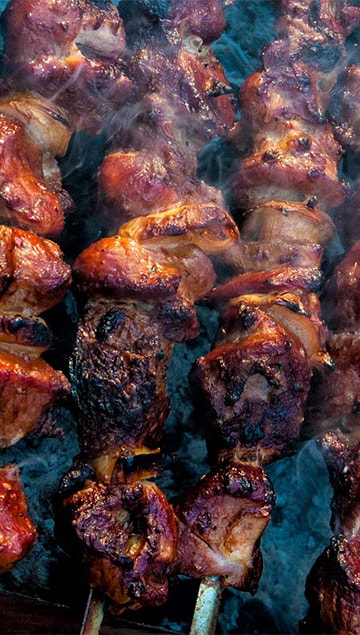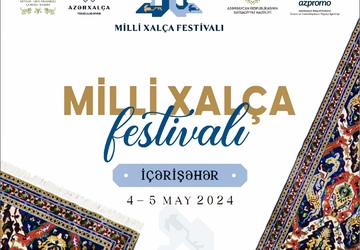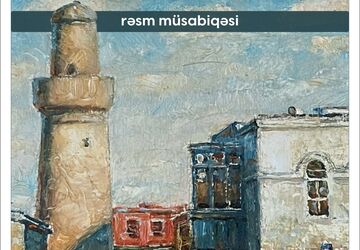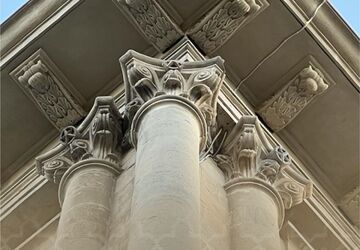Approved
with Order of the Administration of the State Historical-Architectural Reserve "Icherisheher"
under the Cabinet of Ministers of the Republic of Azerbaijan
dated 12.05.2009
N 1
Appendix N 1
to a preservation agreement on obligations on the use and the safeguarding of the monument
RULES OF USE
A user of a monument located in the territory of the State Historical- Architectural Monument "Icherisheher" shall respect the national, historical and aesthetic value of the monument, comply with the preservation arrangement and not allow the deterioration of the current condition of the monument. To this end, the User shall undertake the unconditional compliance with the Rules of Use. In the process of using of the monument the following shall be forbidden:
- Limit the overall appearance of the monument; perform artistic and aesthetic works alien to and uncharacteristic of the existing architectural style and distorting the appearance of the main buildings and auxiliary structures; post compositions for advertising and announcements, additional inscriptions, cartouches that correspond to the purposes of the monument usage, directly on the surface of the outer walls; drill these walls, pull the wires on the walls and hide them in the ducts carved in the walls; and also fulfill the works on the walls along the facades and at the entrance with the aim to attach artistic -wooden, artistic-metallic, artistic-ceramic and other demonstration and advertising composition elements that demonstrate the existing functional purpose of the monument.
- Put fences and hedges separating the monument from the single complex of the Reserve and isolating its territory.
- Install artificial barriers on the roads and lanes in front of the monument (such as lifting gates, chains, metallic posts, etc.) to restrict free passage.
- Change or liquidate karizes, basins, water wells and single water supply systems located within the monument.
- In the process of removal of harmful plants that destroy facade surfaces, use physical (mechanical) methods, solutions obtained from oil (diesel fuel, etc.) which lead to darkening of stones, chemical acids and herbicides which change the masonry-stone texture, as well as herbicides and other tanning agents not softened with water.
- Modify the existing original architectural and planning solution, arbitrarily perform any earthwork, dismantling, excavation, construction, reconstruction, various installation works in courtyards belonging to the monument, at sites in front of it, using the monument for purposes other than its functions.
- Demolish the existing load-bearing walls in the parts of the monument located below the ground level, in cellars; break through the walls and create passages; erect additional walls; carry out earthwork, excavation and construction work; open production sites; use machinery and equipment of any type in the cellars and drain away the surrounding waters there.
- Arbitrarily change the texture and pattern of the historically developed surfaces of the interior and exterior walls of monuments; cover with cement and sand mortar, stones, tiles and other modern facing materials; cover the ornamented surfaces with lime, emulsion and other solutions (paint); apply various transparent chemical coating (lacquer, varnish, etc) to bare surfaces.
- Install, fix or mount air conditioners, parabolic dishes and other modern devices on the external walls of monuments, in niches and cavities of the walls, drilling them;
- Arbitrarily install and mount, attaching to the wall, stairs, handrails and other devices, new structures of metal or wood, not designed in the monument; and carry out anchorage and concrete works necessary for such works leading to drilling of large holes in the walls and in the floor;
- Expose the monument to changes as a result of any addition, extension or dismantling and demolition; seize for this purpose the areas and sites belonging to the monument; attach to the monument, used by them, the areas attributed to the Reserve, including the sites belonging to the existing streets and pavements, sites, and use them;
- Make bonfire near stone facings and walls during festive ceremonies and other public and mass events held in the territory of the Reserve;
- Remove or adjust the roof, under-dome structure and drum windows, structural lanterns and other sources of light;
- Change the texture and pattern of old building materials (types of stone or brick) of the monument's floor; make artistic design of the floor with artificial materials, including covering the floor with artificial tiles (type of broom (metlakh), glazed tile and tamet); install hydraulic structures of various size not foreseen in the historical interior -fountains, water cascades of various size in form of mountains adjacent to the wall of the monument.
- In case of an official permit issued for operation of a handicraft artisan shop within the monument, use machines and equipment with high impact or shock acceleration used for such activities.
- Drill internal walls for organising exhibitions and sales of various carpets, paintings, samples of applied and decorative arts, etc. and for their proper hanging out by trade objects, museums, exhibitions and other types of activities.
- Remove various stone staircases, sidewalks, gravestones, stone shelves and niches within the walls in the interiors of the monument.











